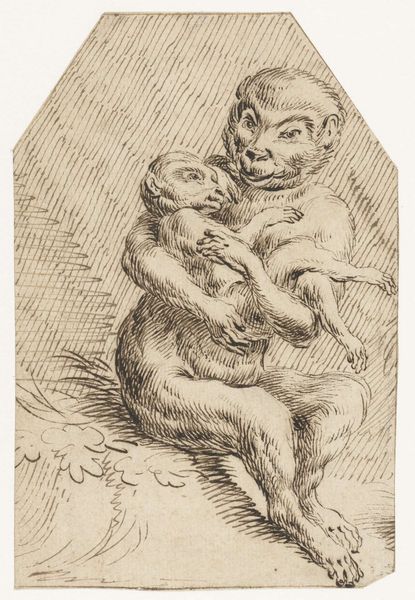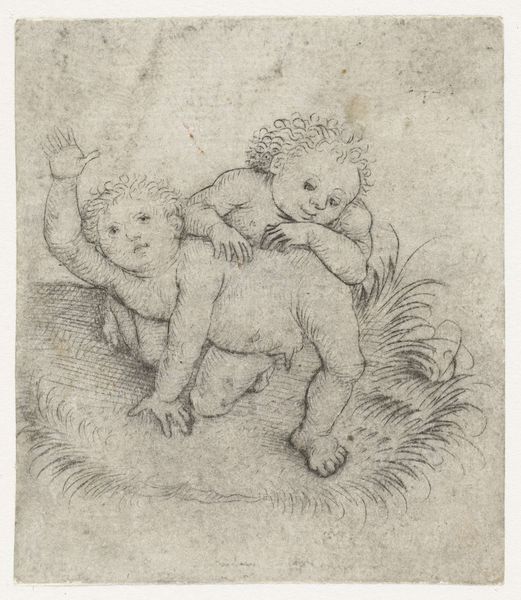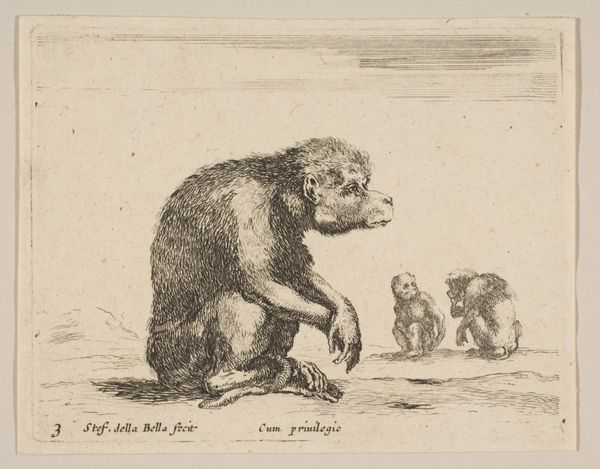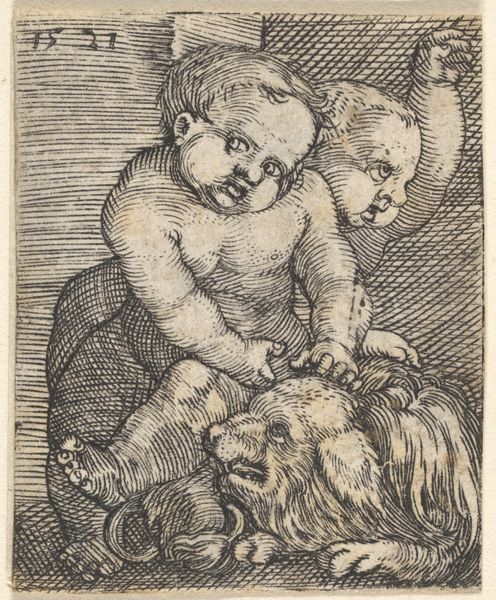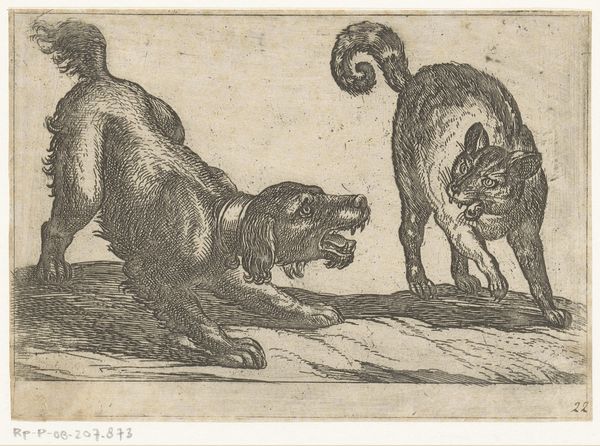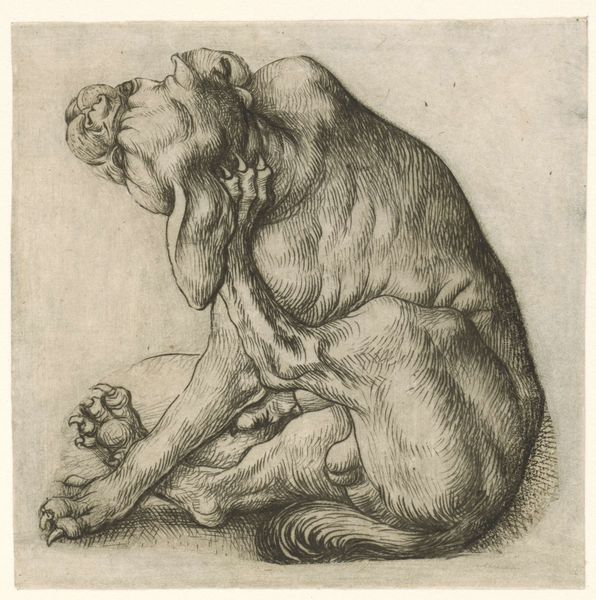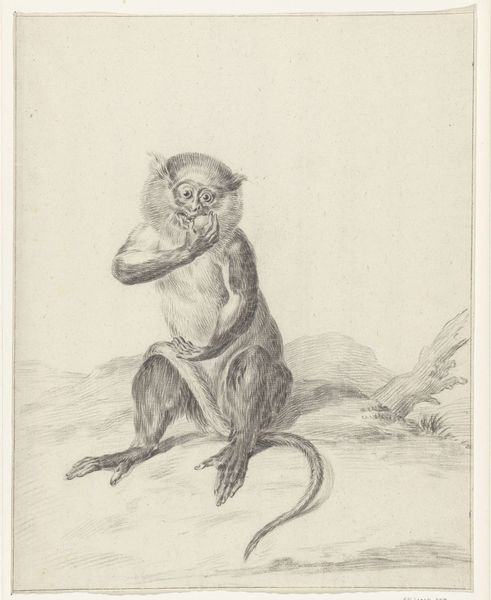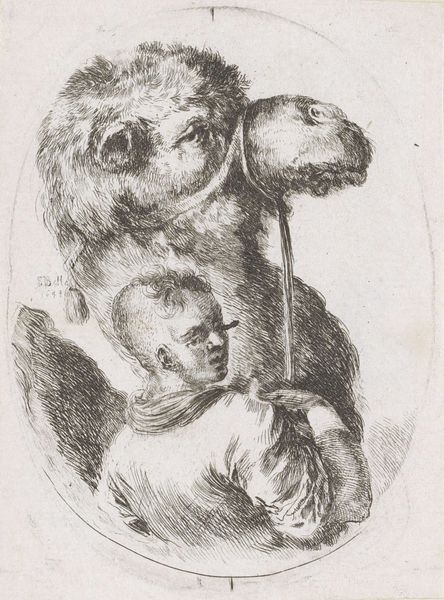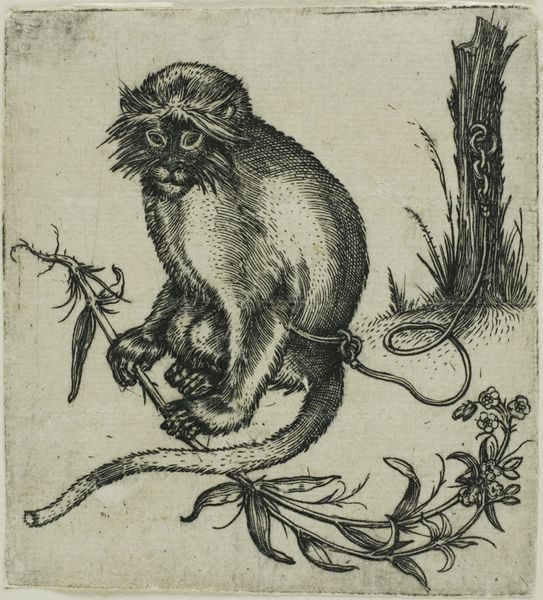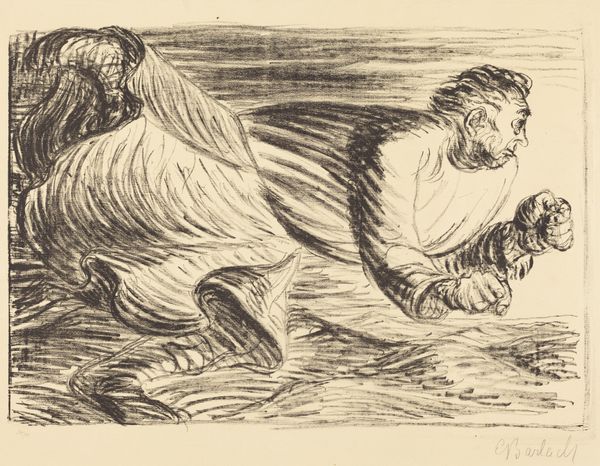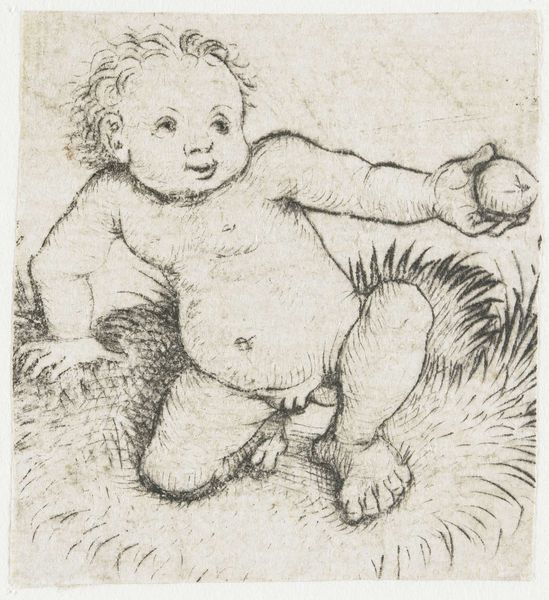
drawing, ink, engraving
#
drawing
#
mannerism
#
figuration
#
ink
#
engraving
Dimensions: height 164 mm, width 225 mm
Copyright: Rijks Museum: Open Domain
Curator: Immediately striking! There’s a strange tenderness juxtaposed with something unsettling in this image. The tones are subdued, but the detail in the fur is remarkable. Editor: Indeed. What we're seeing here is "Aap houdt het pootje van een kat bij het vuur," or "Monkey Holding a Cat's Paw to the Fire," an engraving likely created sometime between 1567 and 1617. It's currently held at the Rijksmuseum. The artist, unfortunately, remains anonymous. Curator: Anonymous but skilled! The starkness, the lines, seem almost clinical in their precision. Yet, the composition gives off an ominous sensation – a vague but definite discomfort. Editor: Mannerism definitely leans into that feeling. It often utilizes strange juxtapositions to unsettle viewers, and this print really plays into it. We must consider the material circumstances as well; prints such as this were often rapidly disseminated and copied. The images gained potency from their repeatability. It’s fascinating how meaning shifts across reproduction technologies. Curator: Absolutely, and looking closely, I'm captivated by the contrast of textures; from the fur, to the smoother skin around their eyes, it conveys this work. You touched on materiality—what sort of labor practices would surround this kind of print? Editor: Prints demanded skilled craftsmen working long hours. Their value hinged on the artist’s design and also on the engraver's ability to replicate this into a matrix for mass production. Its commercial purpose often overshadows considerations for labor practices. This raises crucial questions about accessibility, dissemination, and how the reproduction impacts our viewing of art, shifting emphasis from individual artistry towards industrialized commodification. Curator: That makes perfect sense. When considered that way, the discomfort I initially sensed transforms. Now it feels tethered to anxieties surrounding the period's production, as well as economic imbalance, where we celebrate the image's distribution but overlook those that actually make them. Editor: It truly provides such food for thought; by connecting a seemingly straightforward scene to historical industry, it invites reflections that transcend the image itself.
Comments
No comments
Be the first to comment and join the conversation on the ultimate creative platform.
